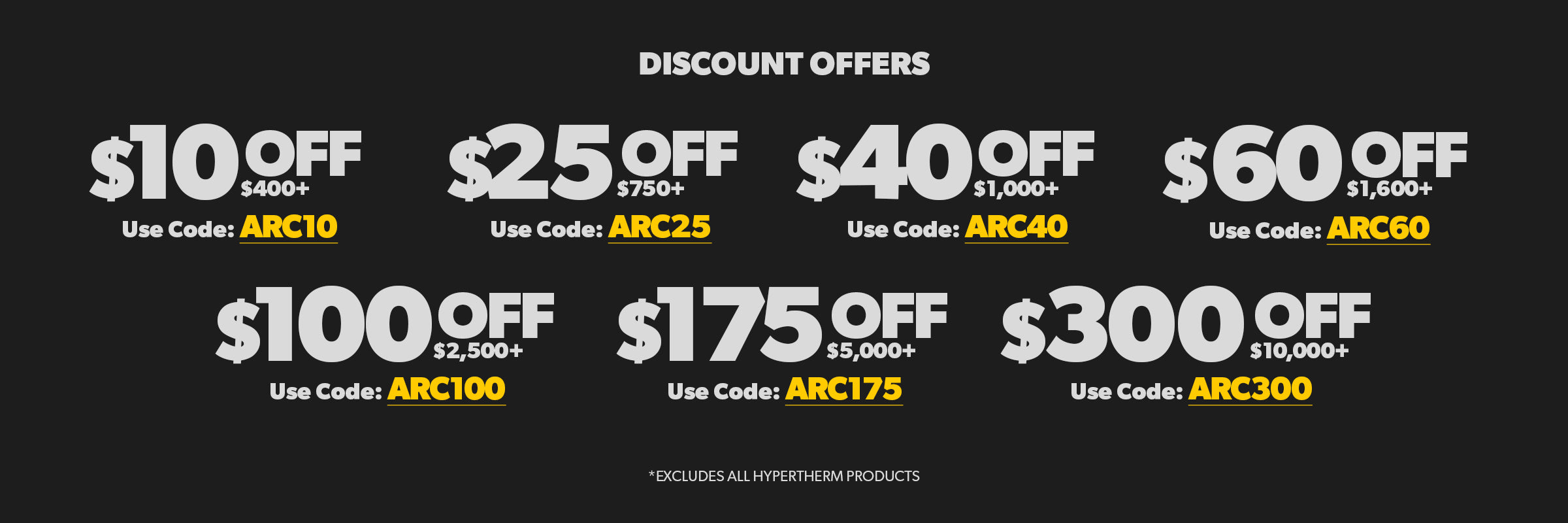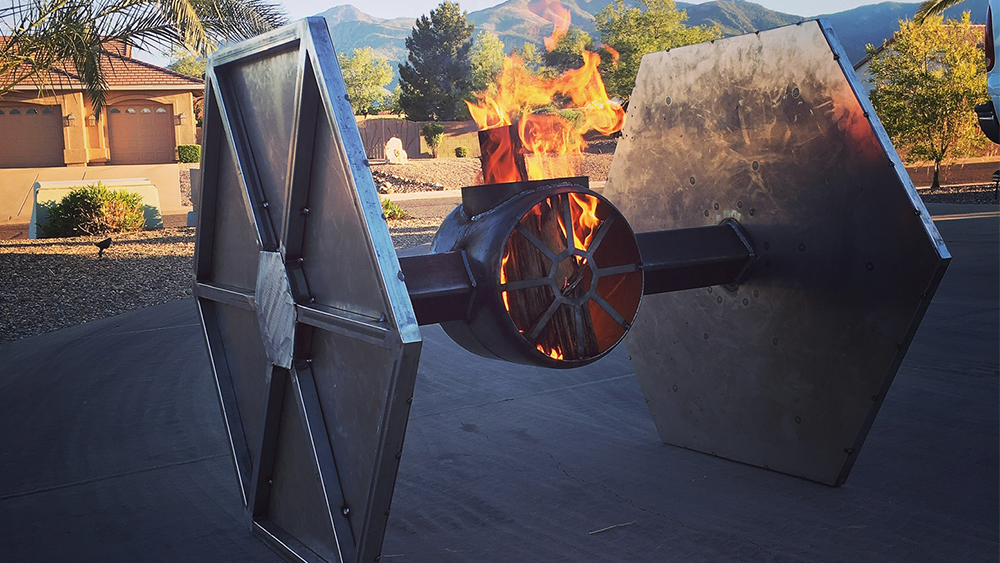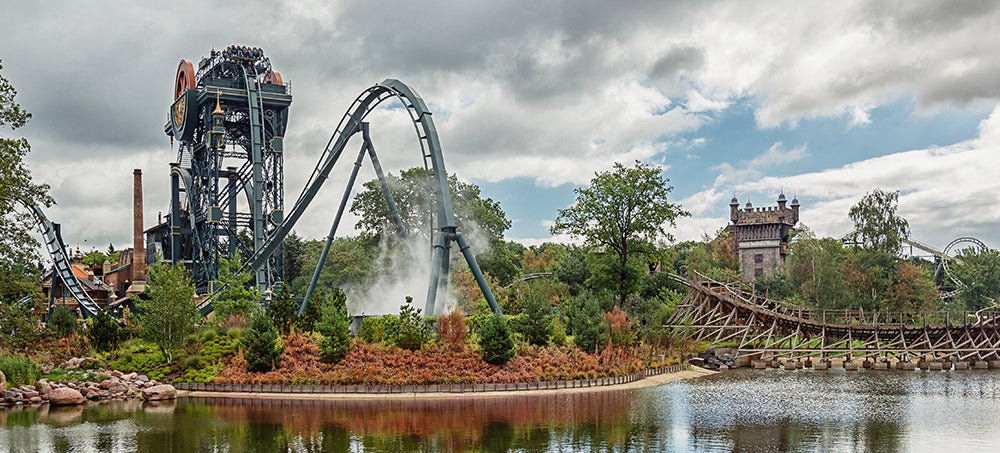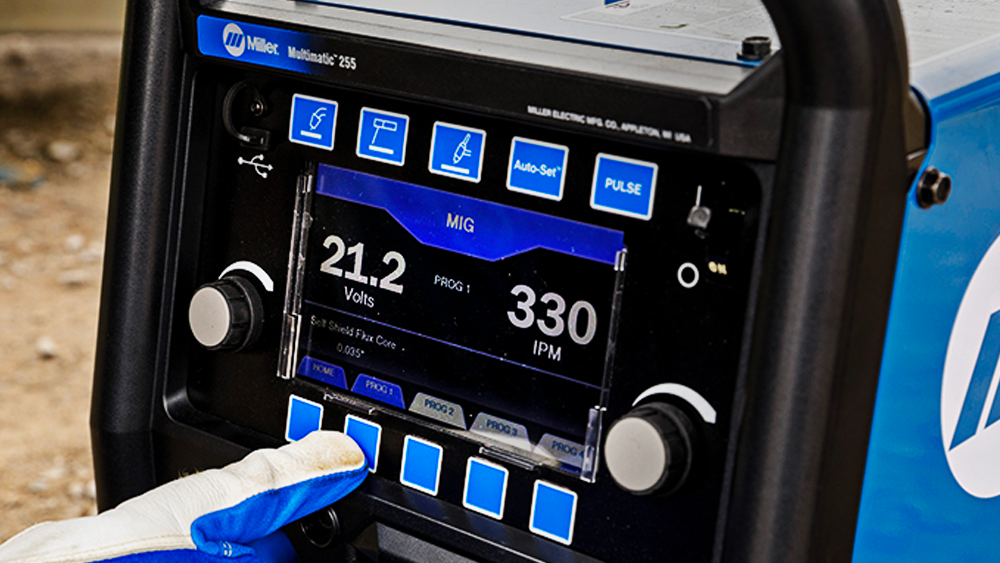“A fire pit! A FIRE PIT?!” We can hear you skeptics yelling at the top of your lungs. “Cavemen have been making fire pits for hundreds of thousands of years, how hard could it be?!”
While your most basic fire pit can be created by an asthmatic toddler, any self-respecting welder will have significantly higher expectations for themselves. The ultimate fire pit has no mortal equal when it comes to the perfect balance between stability, portability, performance and pure, unadulterated beauty. At Welding Supplies from IOC, we're your one-stop shop for all things welding. We carry all the best tools, equipment, and expertise for creating lasting projects for work or your own passion project. Improve your home's outdoor space by putting together an outdoor fire pit that is functional and built to last.
Some common types of fire pits include:
- Propane fire pits
- Natural gas fire pits
- Wood-burning fire pits
- Smokeless fire pits
- And more.
An experienced welder knows the possibilities are endless when it comes to an outdoor fireplace assembly. Behold, the ultimate guide for the ultimate fire pit:
Stability
Stability is arguably the most important characteristic of any fire pit. The last thing you want is to end up on YouTube with a video of your fire pit tipping over and burning down the neighborhood.
There’s a trick though: More stability doesn't always equal a better fire pit. This is because the more stable a fire pit is, the harder and harder it gets to design something that’s both portable and won’t damage your patio. In practice, the biggest stability design decision centers around the “legs vs. no legs” debate.
Legs vs. No Legs
The initial design decision most welders have to make for their fire pit is legs vs. no legs. Legs allow some separation between your fire pit and the ground it rests upon. This is particularly helpful to prevent heat from damaging the surrounding area.

These are the most creative fire pit "legs" we've seen, but they accomplish the goal perfectly.
When concrete is exposed to heat, it can become dehydrated—which can lead to cracking. Even reinforced concrete has issues because the metal rebar is vulnerable to hot temperatures. It’s important to understand that even your most basic campfire will generally reach temperatures over 600 degrees Fahrenheit. A fire pit with legs can hold the campfire away from a concrete patio, helping to reduce damage done over time.
The issue is that the higher the legs are, the higher your fire pit’s center of gravity will be. The higher the center of gravity, the less stability you’ll have. Therefore, you’ll need to balance its distance from the ground with how stable you need your fire pit to be.
If you prefer a legless (or short leg) design, remember that you’re going to be transferring a lot of heat to the surface below your fire pit. It’s strongly recommended that you position your pit on paver stones, dirt or something similar. While most paver stones are made of concrete and will eventually crack, they’re significantly easier and cheaper to replace than a concrete patio.

Airflow
Did you know that space rockets have to carry extra oxygen? Not just for the astronauts to breathe, but for the fire that propels the rocket! In space, there is no oxygen. And without oxygen, you can’t have fire. That same concept holds true with your fire pit. No matter how much fuel you have, without good airflow, your fire will quickly become more disappointing than the Broncos this year.
The secret is to get good airflow above and below your flames. As fire burns, the heat increases the surrounding air pressure. If the heat is able to escape above, fresh air will be pulled in from below. Not only does this make your fire pit work much better, it also prevents smoke from lingering around your pit.
While airflow is important, you’ll obviously still need some kind of base for your wood, coals and ash to rest upon. A metal grate bottom will allow for a lot of airflow, but it could be a fire hazard as well as create a complete mess. Like everything with designing a functional fire pit, there’s a balance that needs to be accounted for. The best designs have a steady base, but incorporate strategic holes or slits that will allow air to flow into the bottom of the fire.

Protection
Finally, you’ll want to consider the best way to protect your fire pit from rust. The most common solution is simply covering your fire pit when not in use. This will prevent rain water from getting in and rusting it.
But what if you live in a humid climate? Or what if your fire pit makes your lawn look ugly when covered up, and you’d prefer it be visible even when not in use? If that’s the case, you need to check out our complete guide on methods for preventing rust. Just remember, some protective coatings don’t work with heat, so take that into account as you consider your options.
The perfect fire pit can bring a tear of joy to even the most grizzled character. Finding the perfect balance of heat protection, stability and airflow is a masterpiece that makes the Mona Lisa look like a finger painting. With these tips and the proper equipment, you can fabricate your own pièce de résistance. If your gear isn’t up for the job, make sure you check out Welding Supplies from IOC. We’ve got the best prices on the internet with all the brands you trust.




